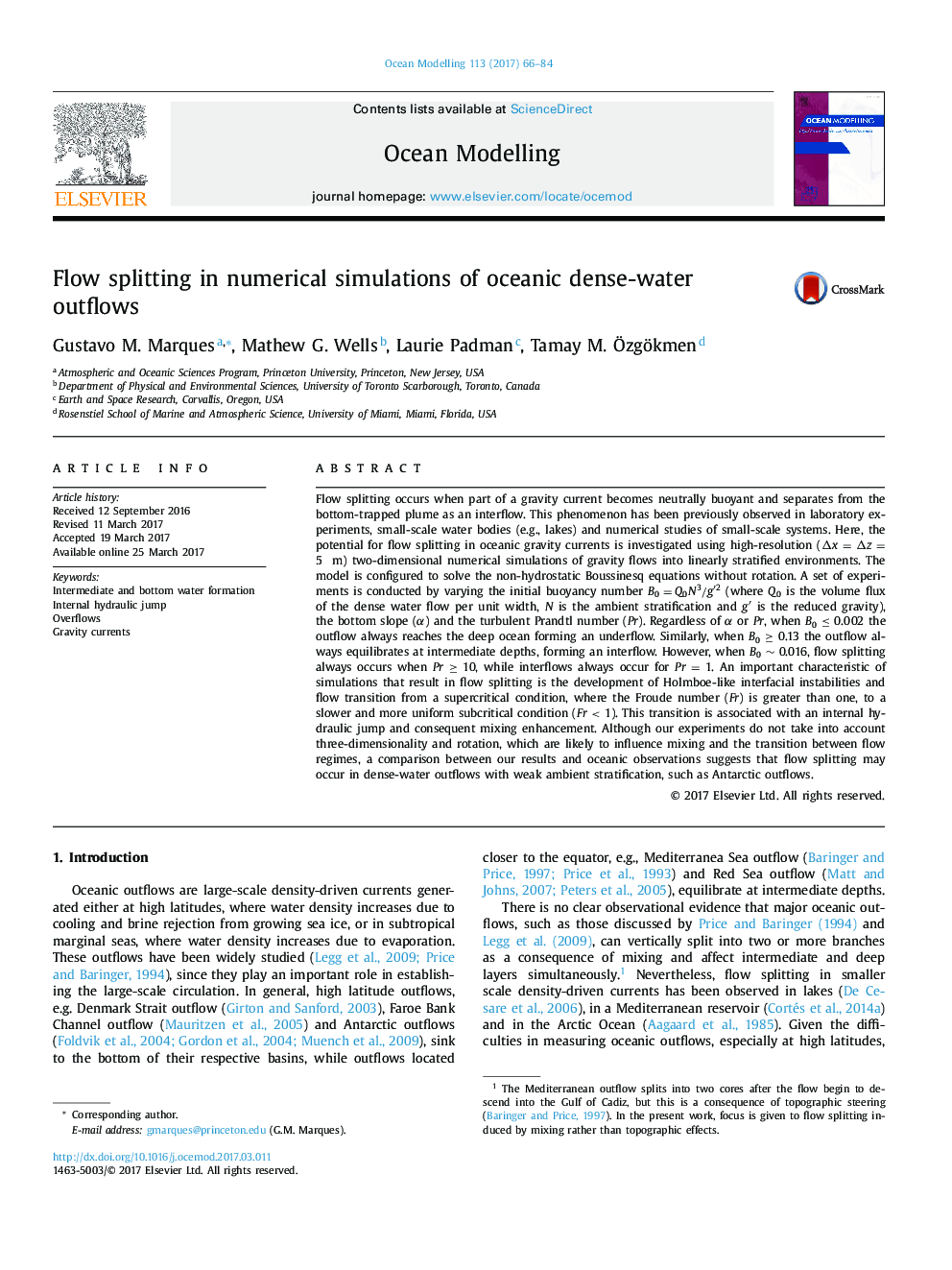| کد مقاله | کد نشریه | سال انتشار | مقاله انگلیسی | نسخه تمام متن |
|---|---|---|---|---|
| 5766415 | 1627736 | 2017 | 19 صفحه PDF | دانلود رایگان |
- Idealized 2D, non-hydrostatic numerical simulations of oceanic outflows were performed.
- Conditions under which flow splitting may occur are identified using non-dimensional parameters.
- The mechanisms giving rise to the flow splitting are examined in detail.
- We hypothesized that flow splitting may occur in oceanic outflows with weak ambient stratification.
Flow splitting occurs when part of a gravity current becomes neutrally buoyant and separates from the bottom-trapped plume as an interflow. This phenomenon has been previously observed in laboratory experiments, small-scale water bodies (e.g., lakes) and numerical studies of small-scale systems. Here, the potential for flow splitting in oceanic gravity currents is investigated using high-resolution (Îx = Îz = 5 m) two-dimensional numerical simulations of gravity flows into linearly stratified environments. The model is configured to solve the non-hydrostatic Boussinesq equations without rotation. A set of experiments is conducted by varying the initial buoyancy number B0=Q0N3/gâ²2 (where Q0 is the volume flux of the dense water flow per unit width, N is the ambient stratification and gâ² is the reduced gravity), the bottom slope (α) and the turbulent Prandtl number (Pr). Regardless of α or Pr, when B0 ⤠0.002 the outflow always reaches the deep ocean forming an underflow. Similarly, when B0 ⥠0.13 the outflow always equilibrates at intermediate depths, forming an interflow. However, when B0 â¼ 0.016, flow splitting always occurs when Pr ⥠10, while interflows always occur for Pr = 1. An important characteristic of simulations that result in flow splitting is the development of Holmboe-like interfacial instabilities and flow transition from a supercritical condition, where the Froude number (Fr) is greater than one, to a slower and more uniform subcritical condition (Fr < 1). This transition is associated with an internal hydraulic jump and consequent mixing enhancement. Although our experiments do not take into account three-dimensionality and rotation, which are likely to influence mixing and the transition between flow regimes, a comparison between our results and oceanic observations suggests that flow splitting may occur in dense-water outflows with weak ambient stratification, such as Antarctic outflows.
Journal: Ocean Modelling - Volume 113, May 2017, Pages 66-84
